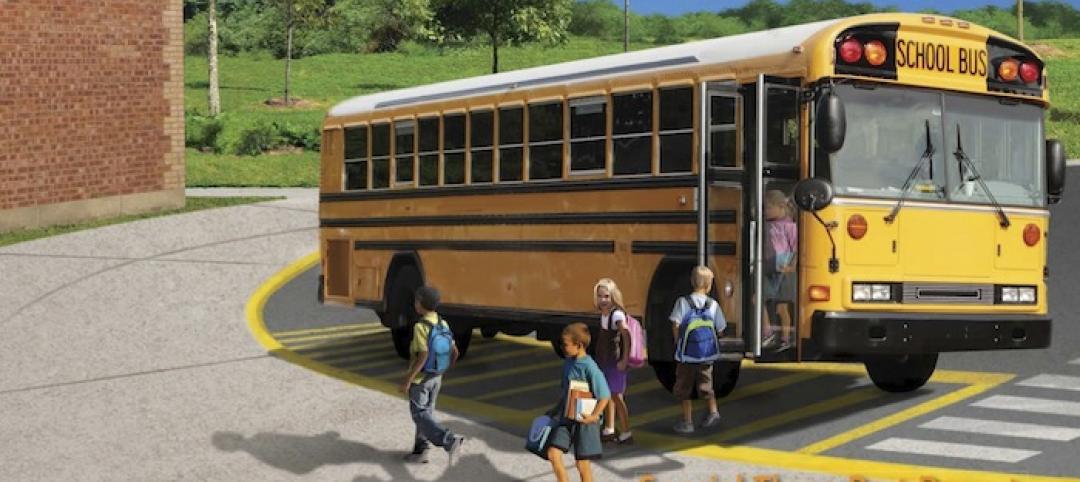The recent mass shooting at an L.G.B.T. nightclub in Orlando, Fla., once again raises emotional questions about gun ownership, the government’s antiterrorism policies, and how to thwart an ideologically motivated, if deranged, individual from wreaking havoc in the future.
In an opinion piece published in the Chicago Tribune on Monday, the newspaper’s architecture critic Blair Kamin notes that terrorist targets are no longer confined to high-profile buildings such as the World Trade Center in New York. They are occurring with greater frequency in places where large numbers of people gather, like the concert hall in Paris where, last November, gunmen killed nearly 90 people.
The Orlando attack killed 49 people in the club Pulse, which Kamin points out would have seemed the most unlikely of targets, even knowing the profile of its Muslim-American assailant, Omar Mateen, who (according to law enforcement sources) may have been gay.
But can “soft targets” like these be made safer? Kamin wonders if a building’s design provides a viable solution.
He notes that One World Trade Center (now better known as the Freedom Tower) and Alfred P. Murrah building in Oklahoma City have been rebuilt with massively thick walls. The Oklahoma building is now three stories, instead than nine like its predecessor.
The 1,792-foot-tall Freedom Tower may not be aesthetically elegant, but it is engineered with fortification, and assuaging its occupants’ anxieties, as a prime objective.
Back in 2003, the Federal Emergency Management Agency published a primer for designing buildings to mitigate terrorist attacks. “Designing security into a building requires a complex series of tradeoffs,” FEMA stated. “Security concerns need to be balanced with many other design constraints such as accessibility, initial and life-cycle costs, natural hazard mitigation, fire protection, energy efficiency, and aesthetics.”
A dozen years later, the world is now a more dangerous place, and terrorism is more random and unpredictable. Kamin acknowledges that, in their desire to feel safer, people will sacrifice a certain amount of freedom and convenience, such as metal detectors and patdowns at airports and ballparks.
But FEMA’s advisory isn’t entirely irrelevant, either. Kamin rejects the presumption that every single venue where people congregate—a restaurant, a shopping center, etc.—needs to be made into a fortress.
His column further asserts that it is both unrealistic and impractical to ask designers and building owners to install protective measures that would limit freedom of movement and assembly beyond what most Americans are willing to tolerate.
Such measures “seek solutions in the wrong place,” he says. “And grant a victory to the terrorists.”
Related Stories
Sponsored | | Apr 23, 2014
Ridgewood High satisfies privacy, daylight and code requirements with fire rated glass
For a recent renovation of a stairwell and exit corridors at Ridgewood High School in Norridge, Ill., the design team specified SuperLite II-XL 60 in GPX Framing for its optical clarity, storefront-like appearance, and high STC ratings.
| Feb 5, 2014
'School Security' PDF available to BD+C readers - CORRECTED
I've received several requests from BD+C readers who design and build K-12 schools about the 3-part series we ran in our January issue ("Can Design Prevent Another Sandy Hook?"). They wanted to send the issue to their school boards and other public officials with responsibility for school safety. In light of the importance of this topic, as a special service to our readers we're making the series available in PDF form.
| Jan 13, 2014
AEC professionals weigh in on school security
An exclusive survey reveals that Building Teams are doing their part to make the nation’s schools safer in the aftermath of the Sandy Hook tragedy.
| Jan 10, 2014
What the states should do to prevent more school shootings
To tell the truth, I didn’t want to write about the terrible events of December 14, 2012, when 20 children and six adults were gunned down at Sandy Hook Elementary School in Newtown, Conn. I figured other media would provide ample coverage, and anything we did would look cheap or inappropriate. But two things turned me around.
| Jan 10, 2014
Special Report: K-12 school security in the wake of Sandy Hook
BD+C's exclusive five-part report on K-12 school security offers proven design advice, technology recommendations, and thoughtful commentary on how Building Teams can help school districts prevent, or at least mitigate, a Sandy Hook on their turf.
| Jan 9, 2014
16 recommendations on security technology to take to your K-12 clients
From facial recognition cameras to IP-based door hardware, here are key technology-related considerations you should discuss with your school district clients.
| Jan 9, 2014
Special report: Can design prevent another Sandy Hook?
Our experts say no, but it could save lives. In this report, they offer recommendations on security design you can bring to your K-12 clients to prevent, or at least mitigate, a Sandy Hook on their turf.
| Dec 5, 2013
Exclusive BD+C survey shows reaction to Sandy Hook tragedy
More than 60% of AEC professionals surveyed by BD+C said their firms experienced heightened interest in security measures from school districts they worked with.
| Nov 25, 2013
Manufacturers race to offer EPDs, HPDs in response to LEED v4
Under LEED v4, projects are awarded points for using at least 20 building products that have issued Environmental Product Declarations or Health Product Declarations. In response, manufacturers are racing to offer EPDs and HPDs for their product lines.
| Sep 9, 2013
Top 25 continuing education courses on BDCuniversity
An overview of the 25 most popular continuing education courses on BDCuniversity.com.
















